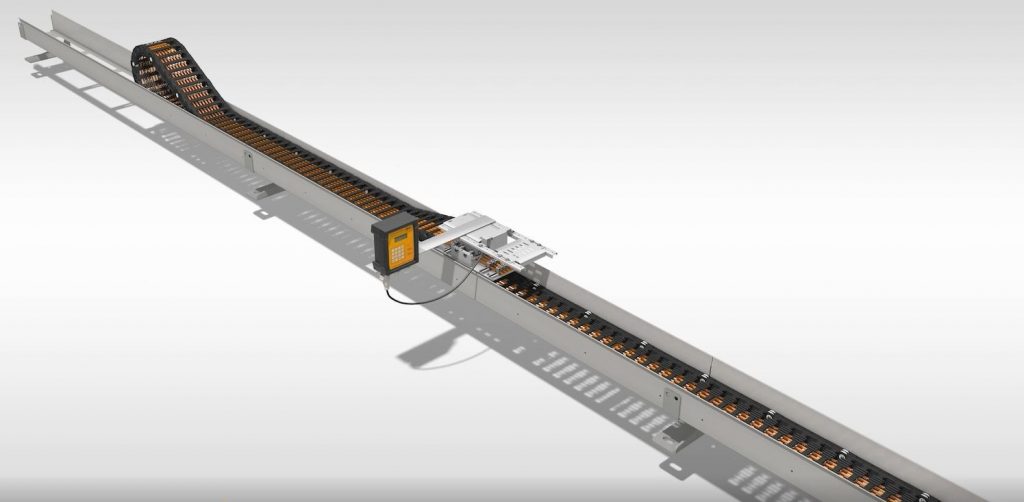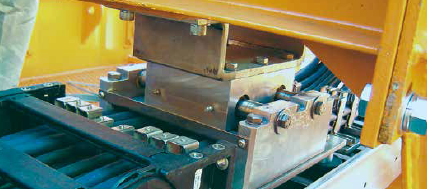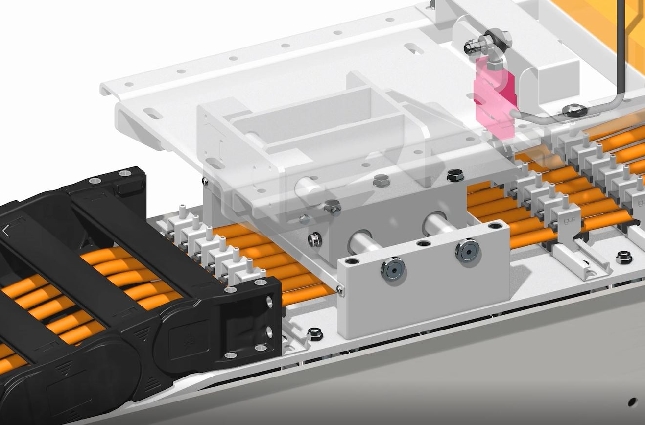Compensation unit for gliding applications
Jens Göbel | 7. April 2020
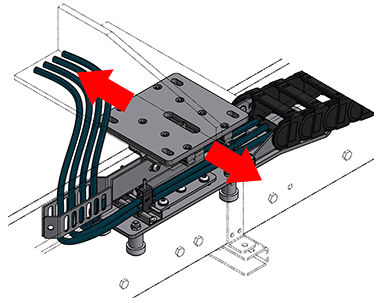
Modern energy chain systems can achieve travels of 1,000 metres and more. But long travels are just where it is difficult to ensure that the guide trough is mounted exactly parallel to the crane rail, for instance. Deviations of more than +/-5 mm over a distance of 100 metres and more are difficult to avoid. But wear to crane rail wheels and crane rails can lead to increased deviation. To ensure that the energy chain runs over itself cleanly on the two outer belts even on long travels, a compensation unit was developed.
Compensation unit variants:
There are various compensation unit designs for energy chains. Everything from swivel units to compensation units on floating mounts can be found in the field.
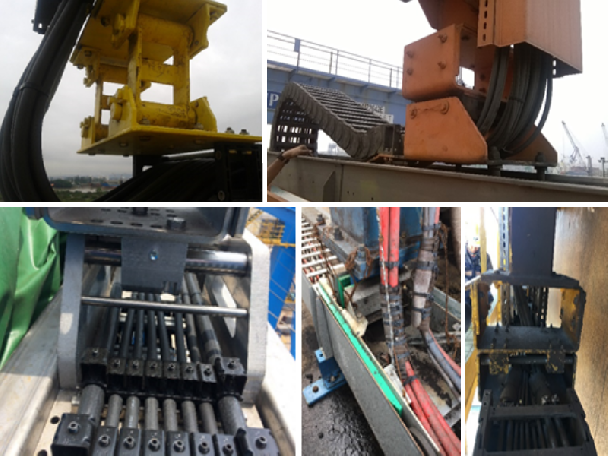
But they all have one one thing in common. If the compensation unit fails due to sub-standard components or insufficient maintenance, the result can be increased chain wear or complete chain failure. It is therefore important that high-quality shaft material and corresponding ball bearings are used. The compensation unit is among the energy chain system components that require regular maintenance and lubrication.
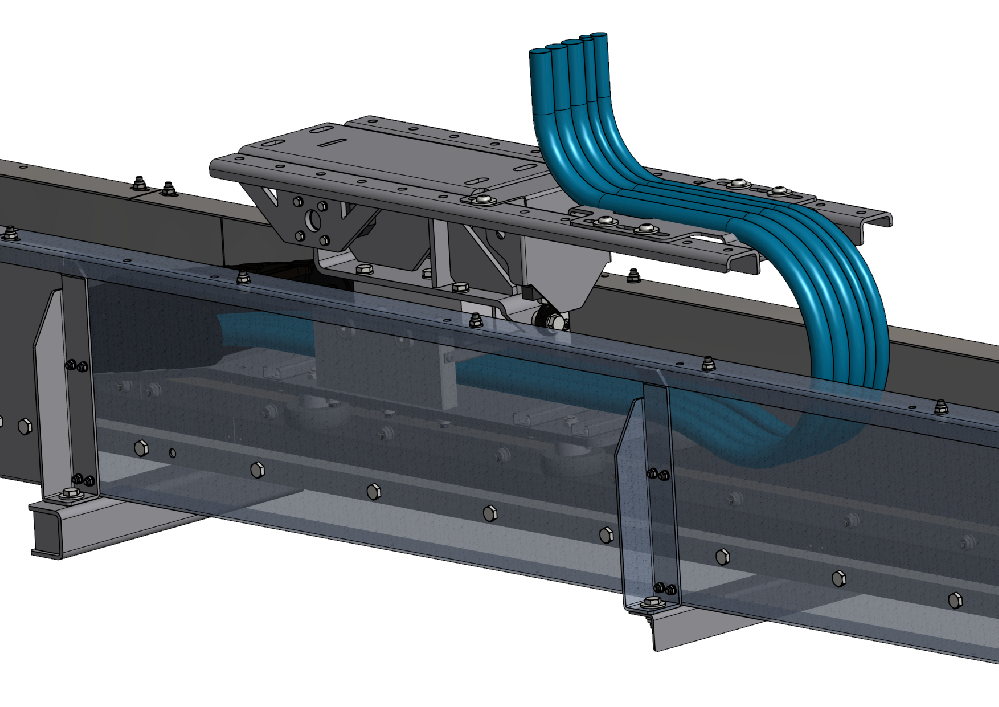
igus compensation units:
There are different variants, depending on the type of application. Crucial for selection of a suitable compensation unit is not only the travel length and application speed, but also the resultant push/pull forces. These forces are to be expected when the energy chain is moved.
Because we have focused on floating mounts in the compensation unit design, we call these units “moving ends”.
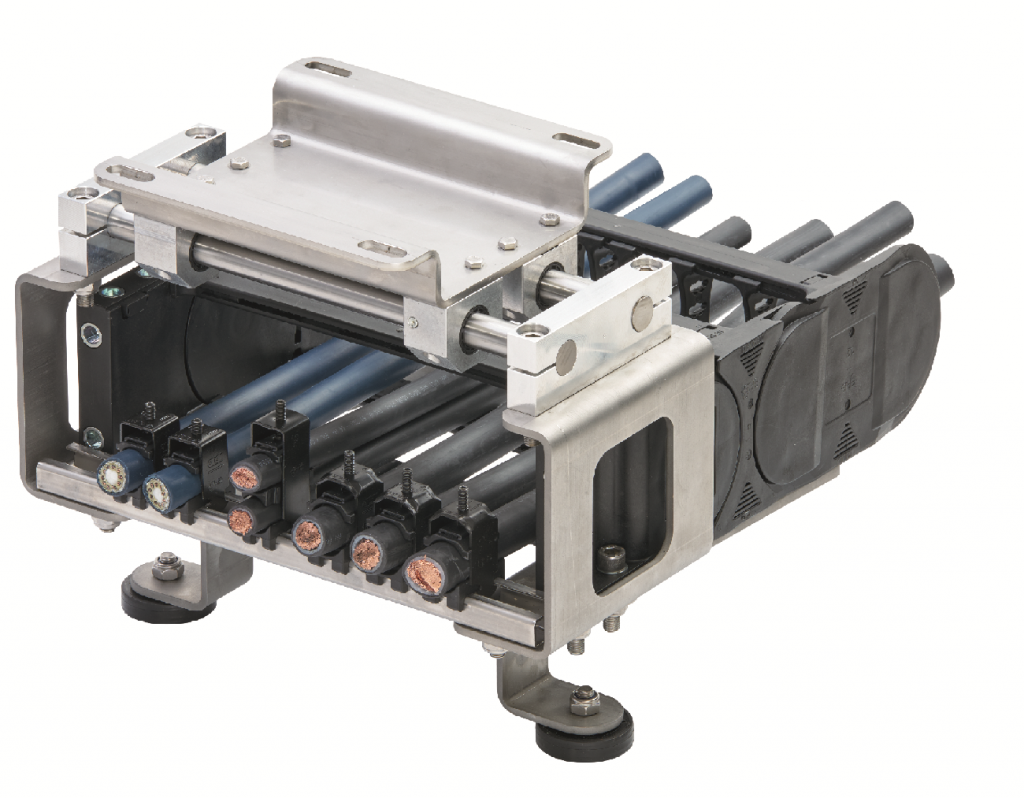
FTA 1000 & 3250 floating moving ends:
As the name indicates, both of the compensation units are designed for applications with a maximum of 1000N or 3250N of force. FTA stands for “floating tow arm”. These compensation units are developed for harbour crane systems such as the rubber-tyred gantry crane (RTG) and the rail-mounted gantry crane (RMG). The compact, light design has advantages in such applications. But it is also useful in the indoor crane area, especially for crane travel.
FMA floating moving end:
These compensation units on floating mounts were developed specially for long travels and greater push/pull forces. FMA stands for “floating moving arm”. This compensation unit is used in the harbour crane area on the ship-to-shore (or “quayside”) crane, for instance. It is even used in tough conditions, such as in bulk goods applications, on the indoor crane in steelworks or in waste processing.
Optional additional components:
igus compensation units can also be equipped with push/pull force monitoring systems (optional). A load cell is integrated into the floating moving end. A corresponding module, installed on the top-hat (DIN) rail in the control cabinet, compares the push/pull forces measured on site with maximum values. Measured values exceeding set maximum values can serve as a signal to shut down the system before the chain system is damaged. At igus, this component is one of a series of modules that have been developed for system dependability and predictive maintenance. All previously available modules are under the isense name.
Do you still have questions or an application you would like to discuss with us? Arrange a virtual consultation appointment now

